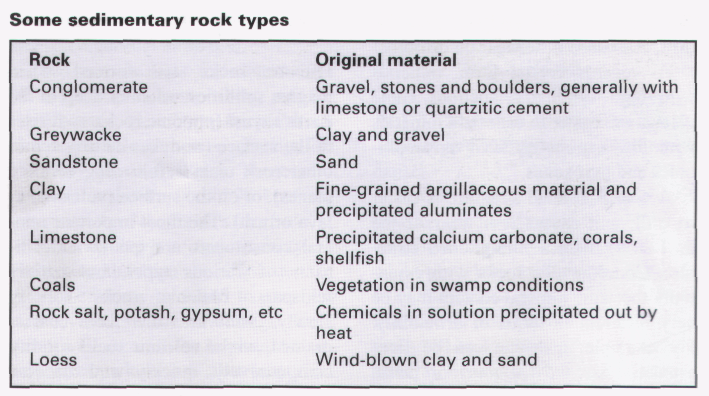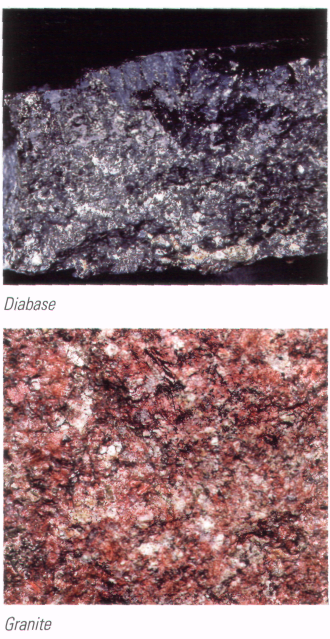
- •2007 Р.
- •3) Match a word in column
- •Rock Excavation in civil Engineering
- •Introduction to Remote Control Technology
- •Supplementary reading:
- •Introduction
- •Versatile Drillrig
- •Multiple Tasking in Western Australia
- •Improving Productivity
- •Exercises:
- •4) Give answers to the following questions:
- •Exercises:
- •1)Give Ukrainian equivalents of the following words and word combinations:
- •2) Give English equivalents of the following words and word combinations:
- •3)Fill the blanks with the necessary words and word combinations:
- •4) Quote the sentences in which these words and word combinations are used. Translate these sentences into Ukrainian:
- •5.Give answers to the following questions:
- •6. Tell what you know about:
- •Importance of Geology
- •Igneous Rocks
- •Investigation and Exploration
- •Exercises:
- •1) Give Ukrainian equivalents of the following words and word combinations:
- •4) Quote the sentences in which these words and word combinations are used:
- •5) Give answers to the following questions:
- •Exercises:
- •2) Give English equivalents of the following words and word combinations:
- •4) Quote the sentences in which these words and word combinations are used:
- •5) Answer the following questions:
- •6) Tell what you know about:
- •Vertical Crater Retreat
- •Exercises:
- •1) Give Ukrainian equivalents of the following words and word combinations:
- •2) Give English equivalents of the following words and word combinations:
- •3) Fill the blanks with the necessary words:
- •4) Quote the sentences in which these words and word combinations are used:
- •5) Answer the fallowing questions:
- •6) Tell what you know about:
- •Supplementary reading
- •Список використаної літератури:
- •«Наукова англійська мова»
Igneous Rocks
Igneous rocks are formed when magma solidifies, whether deep in the Earth's crust (plutonic rock), as it rises to the surface (in dykes cutting across other rock or sills following bedding planes), or on the surface (volcanic, as lava or ash). The most important mineral constituents are quartz and silicates of various types, but mainly feldspars. Plutonic rocks solidify slowly, and are therefore coarse-grained, whilst volcanic rocks solidify comparatively quickly and become fine-grained, sometimes even forming glass.
Depending on where the magma solidifies, the rock is given different names, even if its chemical composition is the same. A further subdivision of rock types depends on the silica content, with rocks of high silica content being termed acidic, and those with lower amounts of silica termed basic. The proportion of silica content can determine the behaviour of the magma and lava, and hence the structures it can produce.
Sedimentary Rocks
Sedimentary rocks are formed by the deposition of material, by mechanical or chemical action, and its consolidation under the pressure of overburden. This generally increases the hardness of the rock with age, depending on its mineral composition. Most commonly sedimentary rocks are formed by the breaking down of another rock by mechanical action such as weathering or abrasion, its transportation by a medium such as flowing water or air, and subsequent deposition, usually in still water. Thus, the original rock will partially determine the characteristics of the sedimentary rock. Weathering or erosion may proceed at different rates, as will the transportation, affected by the climate at the time and the nature of the original rock. These will also affect the nature of the rock eventually formed, as will the conditions of deposition. Special cases of sedimentary rock include those formed by chemical deposition, such as salts and limestones, and organic material such as coral and shell limestones and coals, while others will be a combination, such as tar sands and oil shales.
Another set of special cases is glacial deposits, in which deposition is generally haphazard, depending on ice movements.
Several distinct layers can often be observed in a sedimentary formation, although these may be uneven, according to the conditions of deposition. The layers can be tilted and folded by subsequent ground movements. Sedimentary rocks make up a very heterogeneous family, with widely varying characteristics.
Metamorphic Rocks

The effects of chemical action, increased pressure due to ground movement, and/or temperature of a rock formation, can sometimes be sufficiently great to cause a transformation in the internal structure and/or mineral composition of the original rock. This is called metamorphism. For example, pressure and temperature may increase under the influence of up-welling magma, or because the strata have sunk deeper into the Earth's crust. This will result in the recrystallization of the minerals, or the formation of new minerals. A characteristic of metamorphic rocks is that they are formed without complete remelting, or else they would be termed igneous. The metamorphic action often makes the rocks harder and denser, and more difficult to drill. However, many metamorphic zones, particularly formed in the 'contact zones' adjacent to igneous intrusions, are important sources of valuable minerals, such as those concentrated by deposition from hydrothermal solutions in veins.
As metamorphism is a secondary process, it may not be clear whether a sedimentary rock has, for example, become metamorphic, depending on the degree of extra pressure and temperature to which it has been subjected. The mineral composition and structure would probably give the best clue.
Due to the nature of their formation, metamorphic zones will probably be associated with increased faulting and structural disorder, making the planning of mine development, and efficient drilling, more difficult.
Rock Structures and Mining Method
Macroscopic rock properties include slatiness, fissuring, contact zones, layering, veining and inclination. These factors are often of great significance in drilling. For example, cracks, or inclined and layered formations, can cause hole deviation, particularly in long holes, and have a tendency to cause drilling tools to get stuck, although modern drilling control methods can greatly reduce this problem. Soft or crumbly rocks make it difficult to achieve good hole quality, since the walls can cave in. In extreme cases, flushing air or fluid will disappear into cracks in the rock, without removing cuttings from the hole. In some rocks there may be substantial cavities, such as with solution passages in limestones, or gas bubbles in igneous rock. These may necessitate prior grouting, to achieve reasonable drilling properties.
On a larger scale, the rock structure may determine the mining method, based on factors such as the shape of the mineral deposit, and qualities such as friability, blockiness, in-situ stress, and plasticity. The shape of the mineral deposit will decide how it should be developed .
 The
remaining rock qualities can all be major factors in determining
the feasibility of exploiting a mineral deposit, mainly
because of their effect on the degree of support required, for both
production level drives, and for development tunnels.
The
remaining rock qualities can all be major factors in determining
the feasibility of exploiting a mineral deposit, mainly
because of their effect on the degree of support required, for both
production level drives, and for development tunnels.
Mineral Deposit Exploration
There will be a delicate economic balance between an investment in development drives in stable ground, perhaps without useful mineralization, and .drives within the mineral deposit, perhaps of shorter life, but requiring more support measures. Setting aside support requirements, in general terms it would seem beneficial to carry out as much of the development work as possible within the mineral deposit, making development drives in nonproductive 'gangue' rocks as short as possible. However, it may be decided that a major development asset, such as a shaft or transport level, should be in as stable a ground area as can be found, with further drives or levels made from it. In extreme cases, it may be found that the mineral deposit cannot support development workings without considerable expense. In these circumstances it might be better to make development drives near and below the mineral deposit, and exploit it with little direct entry, such as by longhole drilling and blasting, with the ore being drawn off from below Depending on the amount of disturbance that the mineral-bearing strata has been subjected to, the mineral deposits can vary in shape from stratified rock at various inclinations, to highly contorted and irregular vein formations requiring a very irregular development pattern. The latter may require small drives to exploit valuable minerals, although the productivity of modern mining equipment makes larger section drives more economic, despite the excavation of more waste rock. The tendency of a rock to fracture, sometimes unpredictably, is also important to determine drivage factors, such as support requirements, and the charging of peripheral holes to prevent overbreak. Although over-break may not be so important in mining as in civil tunnelling, it can still be a safety consideration, to prevent the excavation of too much gangue material, and to preserve the structure of a drive.
